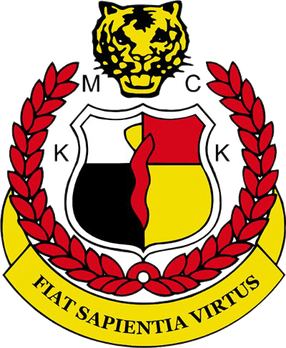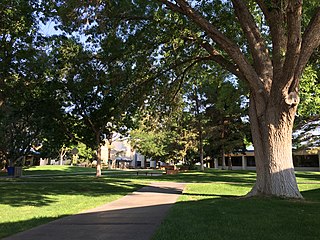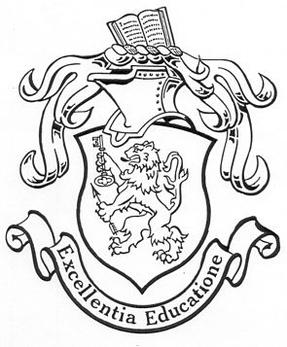
The Malay College Kuala Kangsar is a residential school in Malaysia. It is an all-boys and all-Malay school in the royal town of Kuala Kangsar, Perak. It is sometimes dubbed "the Eton College of the East".

University College School, also known as UCS, is a private day school in Frognal, Hampstead, London, England. The school was founded in 1830 by University College London and inherited many of that institution's progressive and secular views.

Horace Mann School is an American private, independent college-preparatory school in the Bronx, founded in 1887. Horace Mann is a member of the Ivy Preparatory School League, educating students from the New York metropolitan area from nursery school to the twelfth grade. The Upper, Middle, and Lower Divisions are located in Riverdale, a neighborhood of the Bronx, while the Nursery School is located in Manhattan. The John Dorr Nature Laboratory, a 275 acres (111 ha) campus in Washington Depot, Connecticut, serves as the school's outdoor and community education center.
Ethical Culture Fieldston School (ECFS), also known as Fieldston, is a private pre-K–12th grade coeducational school in New York City with two campuses in Manhattan and the Bronx. The school is a member of the Ivy Preparatory School League. The school serves approximately 1,700 students with 480 faculty and staff.
"The Changing of the Guard" is the 102nd episode of the American television anthology series The Twilight Zone.

Rutgers Preparatory School is a private, coeducational, college preparatory day school established in 1766. The school educates students in pre-kindergarten through twelfth grade, located on a 41-acre (0.17 km2) campus along the banks of the Delaware and Raritan Canal in the Somerset section of Franklin Township, in Somerset County, in the U.S. state of New Jersey. Established in 1766, Rutgers Preparatory School is the oldest independent school in the state of New Jersey and the 16th-oldest in the country.

The Diocesan College is a private, English medium, boarding and day high school for boys situated in the suburb of Rondebosch in Cape Town in the Western Cape province of South Africa. The school was established on 2 October 1849 by the Anglican Bishop of Cape Town.

Riverdale Country School is a co-educational, independent, college-preparatory day school in New York City serving pre-kindergarten through twelfth grade. It is located on two campuses covering more than 27.5 acres (111,000 m2) in the Riverdale section of the Bronx, New York, United States. Started as a school for boys, Riverdale Country School became fully coeducational in 1972. It currently serves 1,140 students.
A common school was a public school in the United States during the 19th century. Horace Mann (1796–1859) was a strong advocate for public education and the common school. In 1837, the state of Massachusetts appointed Mann as the first secretary of the State Board of Education where he began a revival of common school education, the effects of which extended throughout America during the 19th century.
The Ivy Preparatory School League is a high school athletic conference of preparatory schools in New York City and its suburbs. The Ivy Preparatory School League has no affiliation with the Ivy League universities.

Aitchison College is an independent, semi-private boys school for boarding and day students from grade 1–13 in Lahore, Pakistan. It has a tradition of providing an education that uses academics, sports, and co-curricular activities as tools for character development. The school follows a curriculum designed to culminate in the International General Certificate of Education and AS Level/A Level qualifications and is geared towards preparing students for university education. The institute is the only Pakistani school that is a member of the G30 Schools of the World. Aitchison has educated former Prime Ministers, including Imran Khan, Feroze Khan Noon and former President Farooq Leghari, lawyers, cricketers, and politicians.
Russell Inslee "Inky" Clark Jr. was an educator, administrator, and a key player in the transition of the Ivy League into co-education in the 1960s and diversified student bodies to the present from the 1960s.

Deerfield Academy is an independent college-preparatory boarding and day school in Deerfield, Massachusetts. Founded in 1797, it is one of the oldest secondary schools in the United States. It is a member of the Eight Schools Association and the Ten Schools Admission Organization.

The Christian Brothers Grammar School, Omagh is an 11–18 boys grammar school in Omagh, County Tyrone, Northern Ireland. It is the largest grammar school in Omagh. It is under the trusteeship of the Edmund Rice Schools Trust (NI). On January 14, 1861, the school officially opened, with 121 boys presenting themselves for admission.

Sandia Preparatory School is an independent college preparatory school located in Albuquerque, New Mexico serving students in sixth through twelfth grade. The school is accredited by the Independent Schools Association of the Southwest (ISAS) and the New Mexico Public Education Department, and is a founding member of the Independent Curriculum Group and a member of the National Association of Independent Schools (NAIS).
The New York Interschool Association Inc., is a consortium of eight independent schools in Manhattan that serves students, teachers, and administration.

York Preparatory School, commonly referred to as York Prep School, is an independent, university-preparatory school in the Upper West Side area of Manhattan, New York City, near Lincoln Square.

Orangeburg Preparatory Schools, Inc. is an independent, college-preparatory, coeducational day school enrolling students in preschool through 12th grade. It is located in Orangeburg, South Carolina. Orangeburg Prep has two campuses: the Lower Campus, housing preschool to 5th grade; and the Upper Campus, housing grades 6 to 12. OPS also operates a year-round day care center on the Lower Campus. Orangeburg Prep was formed through the merger of two segregation academies, Wade Hampton Academy and Willington Academy.

Subiaco Academy is an American Roman Catholic day and boarding school for boys founded in 1928. Serving grades 7-12, it is part of Subiaco Abbey, a Benedictine monastery in Subiaco, Arkansas.

Narayanganj High School & College, is one of the oldest educational institutions of Narayanganj. It was established in 1885.
















